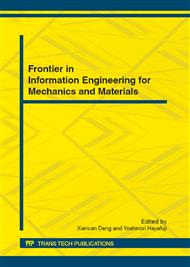p.330
p.334
p.340
p.345
p.350
p.355
p.359
p.364
p.369
Calculation about the Effect of Stress Concentration Coefficient on the Fatigue Properties for Welded Cruciform Joints of 16MnR Steel
Abstract:
Stress concentration coefficient of welded joints has a crucial influence on mechanical properties of welded structures. Geometrical parameters of welded joints seriously affect the stress concentration coefficient. In order to increase the mechanical properties and safety of welded structures, it has great significance for reducing stress concentration coefficient and improving the mechanical properties of welded structures by researching and improving the geometry of welded joints. In this paper, the effect of stress concentration coefficient on the fatigue properties for welded cruciform joints of 16MnR steel was analyzed by using ABAQUS finite element and MSC.Fatigue programe, and the change rule of stress concentration coefficient with the variation of the parameter was studied and the fatigue life changed with the stress concentration coefficient was also researched. The calculation results indicate that reducing the weld tangent line angle θ can effectively decrease the stress concentration coefficient of welded cruciform joints, and the fatigue life of welded cruciform joints can be improved succesfully. In order to obtain the safety welded structures, the true weld tangent line angle θ should be controlled in the angle smaller than 20o.
Info:
Periodical:
Pages:
350-354
Citation:
Online since:
July 2012
Authors:
Price:
Сopyright:
© 2012 Trans Tech Publications Ltd. All Rights Reserved
Share:
Citation:


